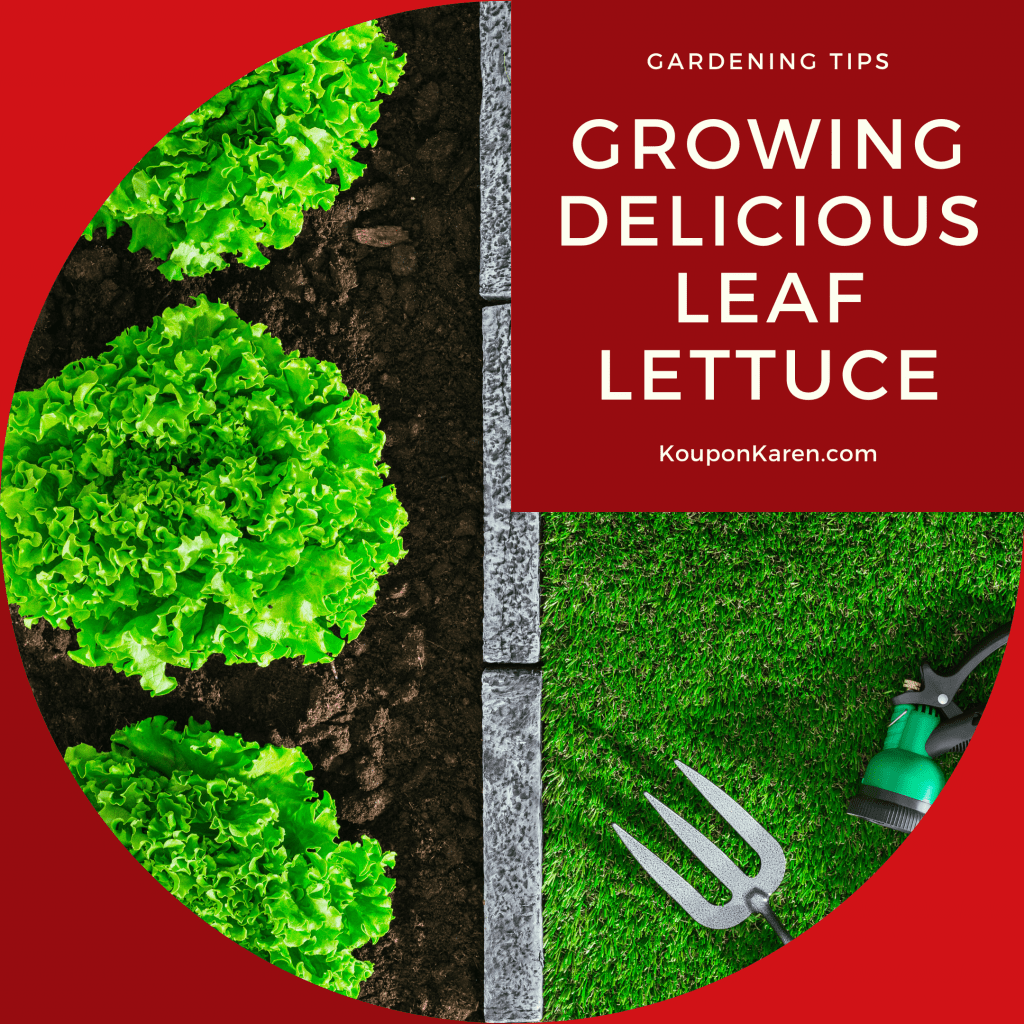Lettuce is one plant most gardeners enjoy growing. It has a short growing season, it does not take up much room and its requirements are easily met. Leaf lettuce can be grown in a container on a patio or a sunroom or it can be grown in a large garden. The thought of enjoying sweet, juicy lettuce can quickly become a nightmare if the harvested leaves are wilted or taste bitter. This can be avoided by being aware of these refreshing plant’s needs.
This year is the second time I’m growing lettuce and these tips have helped me a lot.
Growing Delicious Leaf Lettuce
Climate
Leaf lettuce is one of the first plants that a gardener should plant in the spring. It also does well when planted in the late summer or early fall, when the temperatures are cooler. Even though leaf lettuce can stand a light frost, the gardener needs to be aware of when heavy frost normally occurs in their area. Leaf lettuce will thrive when grown in a temperature range between 45 and 65 degrees Fahrenheit.
Soil
Leaf lettuce is not too picky about the type of soil that it is grown in, although it prefers a sandy loam that has a loose texture and allows just the right amount of drainage that this plant needs. If unsure if the soil is adequate, it is useful to add compost to the planting area to help maintain moisture, prevent weed growth, and to add nutrients to the soil over time.
Planting
When planting leaf lettuce, the garden bed, or area that the lettuce is to be planted, should be worked up very well before the desired planting time. If this is not done, the seeds may have their growth inhibited by large clumps of soil.
Fertilizers can be worked into the soil at the time of planting. To help the plants thrive a 5-10-10 fertilizer is the best choice.
Leaf lettuce seeds are very small so the method of planting is up to the individual. The seeds can be broadcast over an area or be planted in rows with 12 to 15 inches allowed for each row. Seeds only need about one-quarter inch of soil to cover them. As the seeds grow they will need to be thinned so there are between ten to twelve inches between each plant.
Then they need to be watered into the bed. To produce juicy, sweet lettuce water is one of the most important elements. Lettuce does not have deep roots, so when watering it does not need to soak deeply into the soil. It really only needs about one-half inch of water every four days. If the weather is hot, they should be watered more often, perhaps as often as every two days. The best way to water the lettuce is from the base of the plants after they have sprouted. If you water from above, leaves become scorched and the plants may die.
Sunlight
Even though lettuce does not care for hot weather, it does enjoy being planted in the sun. This can be a problem if it is planted in the warmer times of the summer. If so, then it is most important that the plant receives morning sun and possibly some shade in the heat of the day. Perhaps plant it close to taller plants or buildings that will still allow the morning sun to reach the lettuce.
Harvesting
Leaf lettuce can be harvested a little at a time. As the leaves reach the size appropriate for eating, they can be picked while leaving behind the smaller leaves for the next harvest time. If the leaves are allowed to grow too large they will acquire a bitter or woody taste. Leaving the smaller leaves encourages a harvest that will continue for quite a while. When the plant begins to produce flower buds, the plant will place more emphasis on producing seeds. This is the best time to pull the plant out. Then you can plant a few more seeds of lettuce in its place.
By paying attention to the needs of leaf lettuce, such as sunlight, drainage, spacing, and water, most gardeners will discover the joy of growing their own sweet, juicy leaf lettuce for their own tables.
If you are a beginner at Growing Delicious Leaf Lettuce, I hope these tips help you! Be sure to read about our other Gardening Tips!





